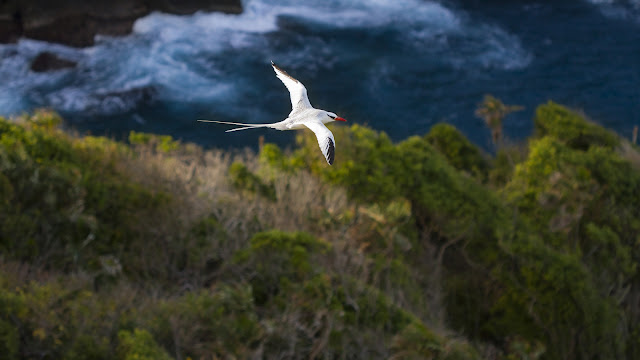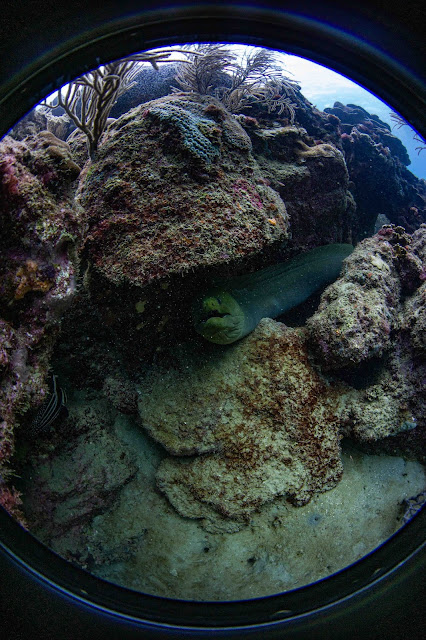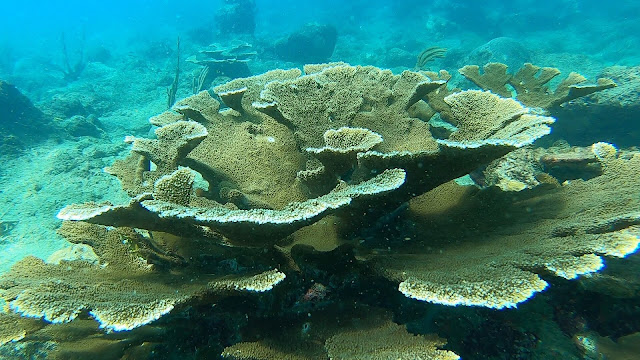Journey to Destination Chocolate
People and partners are key to our new cocoa industry. Ashley Parasram talks with Pat Ganase about networking to revitalize TT’s cocoa industry and the dream to make our islands synonymous with fine flavour chocolate.
“Cocoa is a process that requires the commitment and co-operation of many people, communities and institutions but the process has started,” Ashley Parasram breathes a quiet sigh as he considers the last decade since he fell into the most absorbing work of his life.
He has been in Tobago working with agriculture trainees on the Charlotteville Estate, as well as at the Tobago Tourism and Hospitality Institute at Mt St George. He is also involved in the historical aspect of cocoa, helping restore the rolling roof of an old cocoa house.
 |
| Ashley Parasram, director of Trinidad and Tobago Fine Cocoa Company. Photo by Pat Ganase |
He started thinking about cocoa around 2012, and the goal has become increasingly clear even as he realizes how complex it is.
Born in Trinidad and Tobago, Ashley was four when he was taken by his parents to live in the UK, where he grew up, went to school, completed university and started to work. His core studies were sustainable development and forestry management because “I did not want to work in an office, I wanted to be outdoors.”
“Nature calms me,” he said. Grounded in nature and forests around the world, Ashley absorbed the values of inter-dependence and collaboration.
One of his first projects was as advisor to the Guyana Timber Industries on tropical forest certification systems and accreditation to the Forest Stewardship Council (FSC). He also worked with the UK and European forestry organisations in Belgium, Finland, Indonesia and Southeast Asia.
He came to Tobago in 2012 as an agrotourism consultant on assignment for Environment Tobago: to conduct research and assess a sustainable livelihoods project in Northeast Tobago. This was supported by the British High Commission and the Embassy of the Republic of Germany to Trinidad and Tobago. The focus was rehabilitation of the cocoa estates in the region to promote agrotourism to stakeholders and potential investors from the private sector.
 |
| THA Chief Secretary, Farley Augustine, attends a cocoa planting session on the Charlotteville Estate. Photo courtesy TT Fine Cocoa Company. |
PARTNERSHIPS AND PAPERWORK
Ashley knew very little about cocoa or chocolate – “my grandparents worked on estates” - but he learned that the island once produced and exported more than 30,000 tonnes of beans per year. Here are fertile soils, large abandoned estates and a knowledge base for growing and harvesting cocoa.
“I was told about Trinidad and Tobago cocoa in London by then British High Commissioner Arthur Snell who challenged me to use my sustainable development background to build something in the country of my birth.” He set about investigating in the most practical way.
“I went to London with a bucket of cocoa mass made by a local farmer. When the Immigration Officer asked what was in my luggage, I said chocolate and rum. Of course, he wanted to see it. They scanned the bucket before letting me go on my way.” The cocoa mass was taken to Artisan du Chocolat in Kent to be processed into chocolate. He took samples to the leading UK chocolate makers, Green & Black, Harrods, chefs and hoteliers. They all loved it, recognizing the fruity floral fine cocoa of Trinidad. A couple years later, Artisan du Chocolat made the first batches of chocolate for the launch of the Steelpan, with flavours like pepper, guava, vanilla, milk and dark chocolate.
It took two years to write a business plan which allowed him to raise money for equipment from local banks and UK investors. During this time, he set out to meet people growing cocoa, making chocolate, or having any input into the process. These included the Ministries of Agriculture, Trade, Legal Affairs, the Cocoa Research Centre at The University of the West Indies.
 |
| Trinitario fine flavour chocolate in stout is a distinctive full-bodied beverage. Photo courtesy TT Fine Cocoa Company. |
TRINITARIO IS MY NAME
The Trinidad and Tobago Fine Cocoa Company was registered in 2013.
The Ministry of Agriculture welcomed his initiative, providing support through an MOU. He reached out to the Cocoa Research Centre (CRC) at The UWI for help in setting up a factory and training staff. He is immensely grateful to Darin Sukha and the chocolate making courses provided by CRC, as well as the (government run) Cocoa Development Company who provided beans from La Reunion. He sourced beans from most estates in Trinidad; and embarked on leasing Charlotteville Estate in Tobago which was known for cocoa in the mid nineteenth century. Trinidad and Tobago estates are planted with the cocoa developed here, genetically fingerprinted and known as Trinitario.
“Countries around the world are using Trinitario cocoa which originated here in Trinidad. We, as a TT company, chose Trinitario as our brand to communicate internationally where this cocoa is from. We worked closely with the TT Intellectual Property Office (Ministry of the Attorney General and Legal Affairs) and the EU Intellectual Property Office to ensure that our company and brand are protected according to the Madrid Protocol (signed by 114 countries representing more than 80 percent of world trade). We also registered our steelpan box which is the gift package that goes to major markets. Our website is trinitario.tt and offers on-line purchasing and delivery.”
From the start, Parasram set out to present Trinitario in the most prestigious settings available to him.
SHOWCASE AT HARRODS
In its 180+ year history, Harrods of London, known as the world’s leading luxury department store, had never partnered with a chocolate brand. In 2018, Parasram met with Michael Ward, Managing Director of Harrods who agreed to launch Trinitario chocolate made from four estates, Aripo, La Reunion, Tableland and Ortinola. “I was inspired by Ortinola whose preservation of the plantation house and revitalization of the cocoa estate have created an agrotourism centre – now used for events as well as for visitors to tour a working bean-to-bar operation.”
THE CHOCOLATE BOX
Trinidad and Tobago Fine Cocoa Company operates a factory for processing cocoa beans at Centeno. Parasram said, “When I realised we needed space to make finished chocolate products, I approached the General Manager at the Hilton Trinidad to see if we might be allowed a kitchen in a shop. In 2019, we opened The Chocolate Box. It allows us to showcase our range of products and to interact with customers. After Covid-19, we moved away from truffles; and now use chocolate medallions sprinkled with flavours like chili, lime and nibs; or pineapple chow.
“The niche that allows fine flavour to travel easily and carry Trinitario further is the culinary or industrial range – chocolate chips, cocoa powder, baking chocolate. Trinitario has been used in limited batches of chocolate stout in the UK and in the local Mackeson brand; and in Angostura chocolate bitters. The steelpan boxes are signature Trinitario gift containers.”
 |
| Trinitario chocolate products are available at The Chocolate Box in the Hilton Trinidad |
LESSONS LEARNED
One of the earliest lessons learned, he said, was “we can’t be all things to all people. We had to distinguish our market and decide what was the best range of chocolate we could provide; what would go furthest with the longest shelf life, considering limited resources of cocoa as well as people. Hence our focus on culinary and industrial, authentic flavour for food and beverages.
“When we started to slim down and streamline, we developed clearer roles and responsibilities for people. We developed our ‘bus policy,’ which says if you get hit by a bus, who is the other person who knows what you know, and can do what you do. Beyond teamwork, we want product resilience.
“What is the product? Yes, we produce chocolate. We exported four tonnes to China in 2023; the official chocolate of the China International Import Expo. Because we need a supply of cocoa beans, we are rehabilitating Charlotteville and would encourage other land-owners and villages to bring back their cocoa; to inter-crop on the estates. There is a problem with parrots eating the pods, so we are developing a bird squawker. We are using technology for solar dryers, inventory, proof of origin… Innovation is a significant product.”
INNOVATION TOURISM
Two Tobago institutions received EU Shaping the Future of Innovation grants: the Hospitality and Tourism Institute and Charlotteville Estates towards their work in cocoa and chocolate. EurochamTT and Cariri have supported these EU grants by providing services to assure quality control and compliance with international standards.
“Trinidad has five regions of cocoa,” he says, “but every village in Tobago has cocoa experience. Agrotourism here offers unique experiences in villages. It’s why we are building a chocolate lab in the hotel school in Tobago. We intend to invite international chefs for exchange programmes; they can teach us technique, we teach them about cocoa and local flavours.”
Parasram learned networking from forests, and transfers that strategy to cocoa. He says, “Bringing together resources already here, restoring key historical assets and providing purpose and livelihoods to people where they are, these are good foundations for agrotourism in Tobago.”
 |
| The Trinitario steelpan is the gift box. Photo courtesy TT Fine Cocoa Company |




